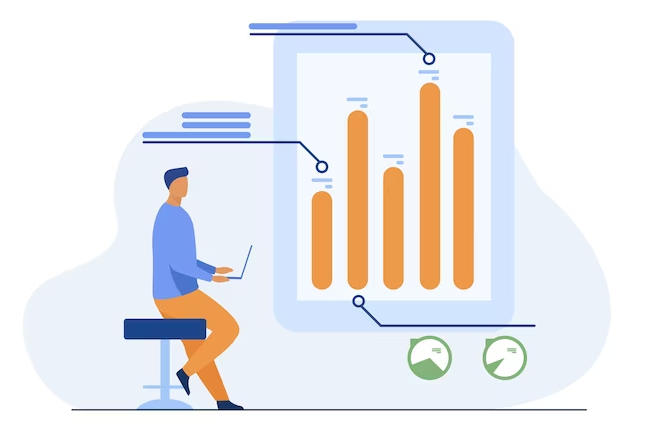Published at business by Sael

Benefits of Business Process Automation that you should know
Published at business by Sael
Efficiency is the primary goal of all companies. An optimal business design decodes the issues in the organization. It also yields good results. So, what is the tool that can be used for this?
The Answer is Business Process Automation.
Most companies rely on automation for better results. A McKinsey survey mentions that 31% of businesses has fully automated at least one business process. So, it is essential to understand Business Process Automation and its benefits.
Table of Contents
1. What is Business Process Automation
3. What are the pillars of Business Process Automation
5. What are the main differences between RPA and BPA
6. Benefits of Business Process Automation
6.1 Increased productivity and efficiency
6.2 Increased Transparency and Security
6.3 Reduced errors and Improved Employee satisfaction
6.4 Streamlined Compliance and Enhanced Governance
6.5 Reduced Operational Costs
6.6 Standardized processes
6.7 Cross-Departmental Collaboration
6.8 Reliable Insights and Heightened Morale
6.9 Enhanced Service Delivery
6.10 Improved Quality and Consistency
6.11 Easy Documentation
8. What are the best tools for Business Process Automation
1. What is Business Process Automation

Business Process Automation eliminates manual human intervention. With a connected set of software applications, BPA automates processes and workflows between a business's departments. It focuses on the overall strategy rather than one particular approach.
2. Examples of BPA
BPA uses technology to automate manual work and repetitive tasks in business processing. This helps in higher efficiency, reduced operating costs, and accurate results.
Examples of BPA are:
• Employee Onboarding,
• Purchase orders,
• Customer service,
• HR Processes,
• Management,
• Data Entry, etc.
3. What are the Pillars of Business Process Automation
BPA has three essential pillars
3.1 Orchestration
Orchestration allows for easier Collaboration and automation of processes between management teams and the IT department through aesthetically appealing functionalities.
3.2 Integration
As a result of the integration, critical process flows can be implemented across systems and applications, improving the quality of decisions made.
3.3 Dynamic Process Automation
The final pillar is "dynamic process automation," It entails facilitating rule-based and fully automated implementation among these multiple systems to streamline procedures while removing mistakes from manual tasks.
4. Is BPA in demand
In 2023, the BPA industry is projected to generate $13.7 billion in revenue. By 2033, the BPA market could be worth $41.8 billion, representing a Compound Annual Growth Rate (CAGR) of 11.8% over the projected period (2023-2033).
The Business Process Automation software market accounts for about 35% of Global BPM sales revenue.
5. What are the main differences between RPA and BPA
Robotic Process Automation and Business Process Automation help improve business process's speed, efficiency, and accuracy.
RPA and BPA help eliminate manual interference for repetitive tasks and save time.
The difference is their capabilities. RPA helps in automating individual tasks. BPA helps to automate different elements of an end-to-end process. Also, BPA helps optimize business models and orchestrate their workflows.
RPA is effective because it addresses issues directly at the task level. Business process analysis (BPA) effectively resolves problems during a process's workflow.
6. Benefits of Business Process Automation
The benefits of business process automation are numerous. It can help businesses cut costs, boost output, and enhance customer service.
6.1 Increased Productivity and Efficiency
A manual process usually takes a lot of time. Also, it can be done one task at a time. But, when the same task is taken over by digitally, the process's time reduces, and multiple tasks can be finished simultaneously.

Example: Manual Record Request and Record retrieval could take weeks time. When the same work is executed through digital forms, productivity increases, and BPA makes the task accomplished faster work with fewer mistakes.
Example: The payroll process can be automated. This saves time for the employee.

The employees work with more interest and confidence. This will improve efficiency and productivity.
6.2 Increased transparency and Security
The most important benefit of BPA is increased business processes transparency. The business owners will be happy with the process.

When BPA is applied in the organization, important metrics in departments like finance, billing, sales, etc., can be easily captured, and the report can be generated.
When the organization wants sustainable success, transparency is essential. When the process is digitally observed, the functioning method is clearly visible to the senior management.
When the processes are well-documented and the workflow is clear organization's visibility increases.
Managers can do their work without fretting over the employees. Because they do the work, that is mentioned to do.
When processes are mapped out, it's easy for leaders to find problems and opportunities.
Security places a major role in an organization. The paperwork might be easily stolen or corrupted if the business records are not digitalized and protected.

So, BPA provides increased Security to the business operation information's. You can store the content digitally and use passwords and verified user logins to enable multiple layers of Security.
6.3 Reduced Errors and Improved Customer service
Human errors might cause disasters in organizations. They must be repaired slowly. These errors are excessive and also kill time. This may affect the beneficialness of the organization.

The study by IBM mentions Human error is the leading cause of approximately 95% of all cybersecurity breaches.
When human error is inevitable, BPA tools reduce human involvement and numerous errors.
BPA also helps in improved customer service. Automated processes make processes more accessible and faster. It also reduces the holdup time for the customers.

Also, when the process is automated, it can be completed accurately, and customer complaints reduced. It, therefore, increases customer satisfaction.
6.4 Streamline Compliance and Enhanced Governance
Compliance is an essential component of an effective organization. Because it makes sure you're following the rules your agency'sagency's governing body has set. When the organization does not follow the rules like maintaining the records of sales, then the consequence would be expensive. Compliance measures are another area that can enjoy process automation.

When you digitize and automate a process, you keep records of every aspect. The ability to store this information is beneficial through potential records audits.
6.5 Reduced Operational Costs
The main goal of most business owners is to optimize the use of resources like money and work smart, which involves less time. When Human executes tasks, it takes a longer time. Because one at a time, is the rule.

When the processes are not performed correctly, 30% of income is lost yearly. Also, manual processes are prone to risk.
When the business follows Workflow automation, the processes become risk-free, and the costs are drastically reduced.
6.6 Standardized Processes
There are many employees and stakeholders associated with the manual process. Every employee would stick to their way of taking things forward and technique of steering the work. Also, when extra new tasks are assigned, they should be looked upon.
So, there are errors within the organization's records, and some might be expensive ones. So, BPA would provide standardization in the processes. Automation will ensure cooperation among the employees and that the workflow process steps are properly followed.
6.7 Cross-Departmental Collaboration
Workspace collaboration is vital, says 75% of employees—productivity increases when the organization is more inclined towards automation. Automation helps streamline day-to-day work. It also enables Collaboration among the members of the team.

Business Process Automation enables you to end daily reminders and inform the team members about the priority tasks. So, BPA decreases the issues and ensures it provides time to think and generate different ideas for business. Overall, it enables a route path to communicate efficiently among the organization's members and ensures cross-departmental Collaboration.
6.8 Reliable Insights and Heightened Morale
A business process is made up of different steps. Manual monitoring is not feasible. When the process is automated, it would be easy for the managers to understand the flow thoroughly and get reliable insights. This, as a whole, will be beneficial for all the office members.

Team Morale is a vital advantage of BPA. When the process is automated, the employees work according to their comfort zone, and the results are productive. Also, the waiting time for approvals is greatly reduced. So, when team morale increases, it helps in retaining the employees effectively.

6.9 Enhanced Service Delivery
The day-to-day activities take time to keep track of. This makes the delivery of the products delayed, and customers would be disappointed. When the BPA is put into action, the attention toward customer satisfaction increases, and the goals are achieved quickly.

BPA makes your tasks easier and customer satisfaction is achieved through enhanced service delivery.
6.10 Improved Quality and Consistency
When humans perform the business process, errors are inevitable. However, when Business Process Automation is implemented, the results are flawless. Every operation is processed consistently, and the quality of the output is appreciable.

This reduces the manufacturing time and costs leading to higher-quality design and feature-packed products.
So, quality and consistency offer more time and more efficiency.
6.11 Easy Documentation
Documenting all the business processes is a tedious task. Human error is unavoidable. Also, time consumption is enormous.
File Transfer is an essential work in any business. For this, MFT software is used by organizations. MFT is Managed File Transfer. This work is maintained in a broader environment that complicates normal business operations.
The idea is to merge MFT with BPA. This eliminates the complication from the circumstances. Also, BPA helps save FTP. BPA also protects data mobility and files can be shared easily from end-to-end workflows.
7. Best Practices for BPA
The best business process management practices are as follows:
1. Specify an Appropriate Process Methodology
2. Recognize the Capabilities
3. Determine the Ideal Technology
4. Evaluate the Enhancement
5. Act to Achieve Sustainable Objectives
6. Continuous Increase in performance.
8.What are the best tools for Business Process Automation
Business Process Automation tools significantly impact organizational operations. Let us see the best tools for BPA.
• Asana - Asana is a tool for managing projects that include features geared towards the manager and the worker.
• ProcessMaker - ProcessMaker is an advanced low-code BPM and business process automation platform ideal for rapidly expanding businesses.
• ActiveBatch - ActiveBatch is a low-code platform for automating workflows.
• KissFlow - Kissflow is a business process automation solution that takes a minimalistic approach.
• HootSuite - Hootsuite is a widely used automation tool for managing social media profiles.
• Basecamp - Basecamp is an online project management and collaboration tool popular among businesses.
• Comindware Tracker - Comindware Tracker is a cloud-based service that automates a wide variety of business processes, including those related to troubleshooting, communication, project management, workflow management, human resource management, and resource utilization.
• Lserfiche - Laserfiche is an automated content management system that organizes your digital data.
• Quu - The Quu tool was developed to automate various tasks, including marketing and content research.
• TrackVia - TrackVia is a workflow management platform with a well-designed low-code development environment.
9. Conclusion
Business process automation empowers organizations to reduce human error. Increasingly, companies employ a central tactic to provide their customers with the best possible goods and services while keeping costs down and maximizing efficiency.





